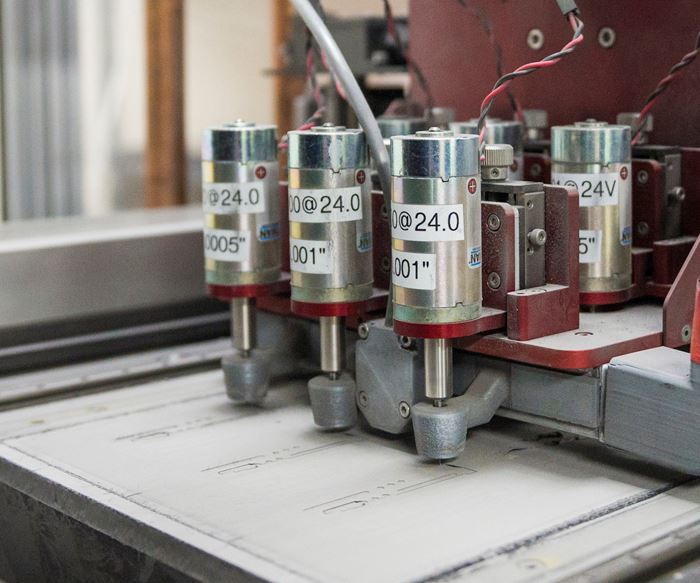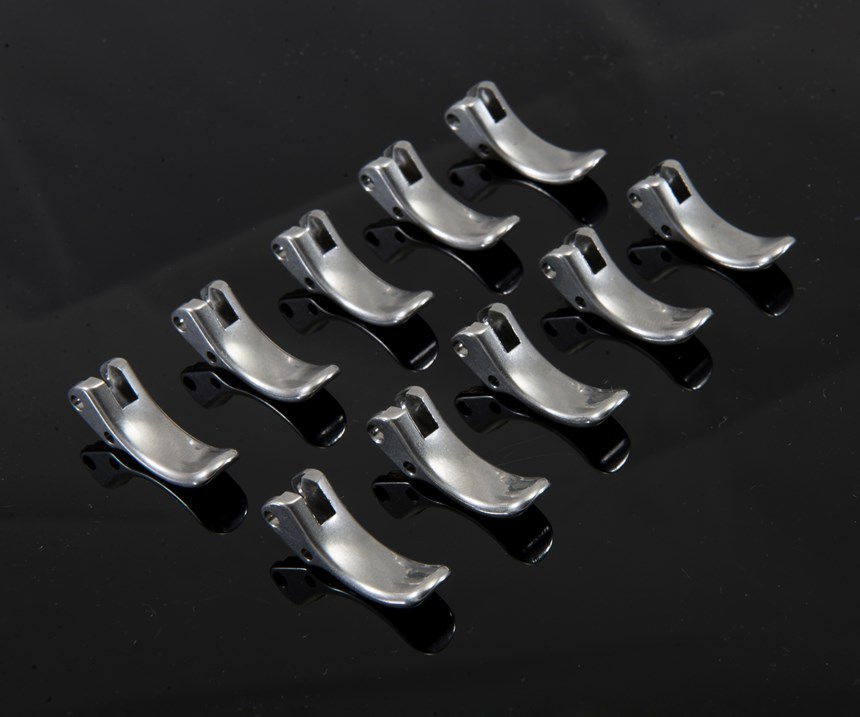3DEO Brings an "Additive Funk" to Manufacturing for Production
The California-based startup is providing metal production parts using its own process that combines additive manufacturing with conventional machining.
Share








.png;maxWidth=45)
DMG MORI - Cincinnati
Featured Content
View More


“Metal serial production is the holy grail,” says Matt Petros, chief executive officer of Gardena, California-based 3DEO. “We intend to deliver hundreds of thousands of parts, creating additive technology at scale.”
3DEO is just one of a growing number of manufacturers applying additive manufacturing (AM) to provide end-use parts at production scale. But rather than using a supplier’s 3D-printing technology to produce those parts, 3DEO’s founders elected to develop their own AM process. Today 3DEO manufactures thousands of small, repeatable metal parts using this technology. Its goal is not to compete with other metal AM processes, but to win work that would otherwise be made via machining or metal injection molding (MIM). The speed of the process and its lack of tooling make it possible for 3DEO to compete on price versus these more conventional technologies.
Vice President of Operations Marty McGough describes 3DEO’s technology as “traditional manufacturing with an additive funk.” The process is similar to binder jetting, with green parts built up by successively adhering layers of metal powder with a binding agent; once printed and cleaned of powder, the parts are sintered in a standard MIM furnace. However, rather than binding the powder layers into cross-sections of the parts as in typical binder-jetting machines, 3DEO’s printers bind the entire layer at once. After one or several layers have built up, micro end mills cut the geometry of the part as a vacuum tip removes the scrap powder.
Cutting the green parts as they are being built has several advantages. Milling in process enables 3DEO to avoid some of the surface-finish issues common to 3D-printed parts, resulting in smooth walls that often don’t require finish machining after sintering. The end mills can move across multiple layers in a three-dimensional path to eliminate stairstepping, the telltale layer lines visible in many 3D-printed parts. It’s also possible to cut at depths less than a full layer’s thickness to create intralayer features, effectively allowing the parts to achieve tighter tolerances than the printer alone. As an added bonus, the wear on the cutting tools is minimal compared to cutting a solid piece of stock or fully sintered part.
Developing this unusual process has been only the first stage for bringing AM into production, however. Read more about 3DEO’s strategy to scale metal AM.

Want to learn more about 3D printing?
Sister publication Additive Manufacturing explores how manufacturers are applying 3D printing to make tooling, molds, functional prototypes and end-use parts. Subscribe.
Related Content
-
Digital Transparency in Machining Key to Multi-Site Additive Manufacturing
Cumberland Additive’s CNC programmer in Pennsylvania spends most of his time writing programs for machine tools in Texas.
-
JTEKT Technology Days Showcases Synergies
The event took place following the company’s completion of its new showroom and decision to merge several of its brands under the JTEKT name.
-
How to Meet Aerospace’s Material Challenges and More at IMTS
Succeeding in aerospace manufacturing requires high-performing processes paired with high-performance machine tools. IMTS can help you find both.

.jpg;width=70;height=70;mode=crop)
































.jpg;maxWidth=300;quality=90)
.jpg;maxWidth=300;quality=90)

